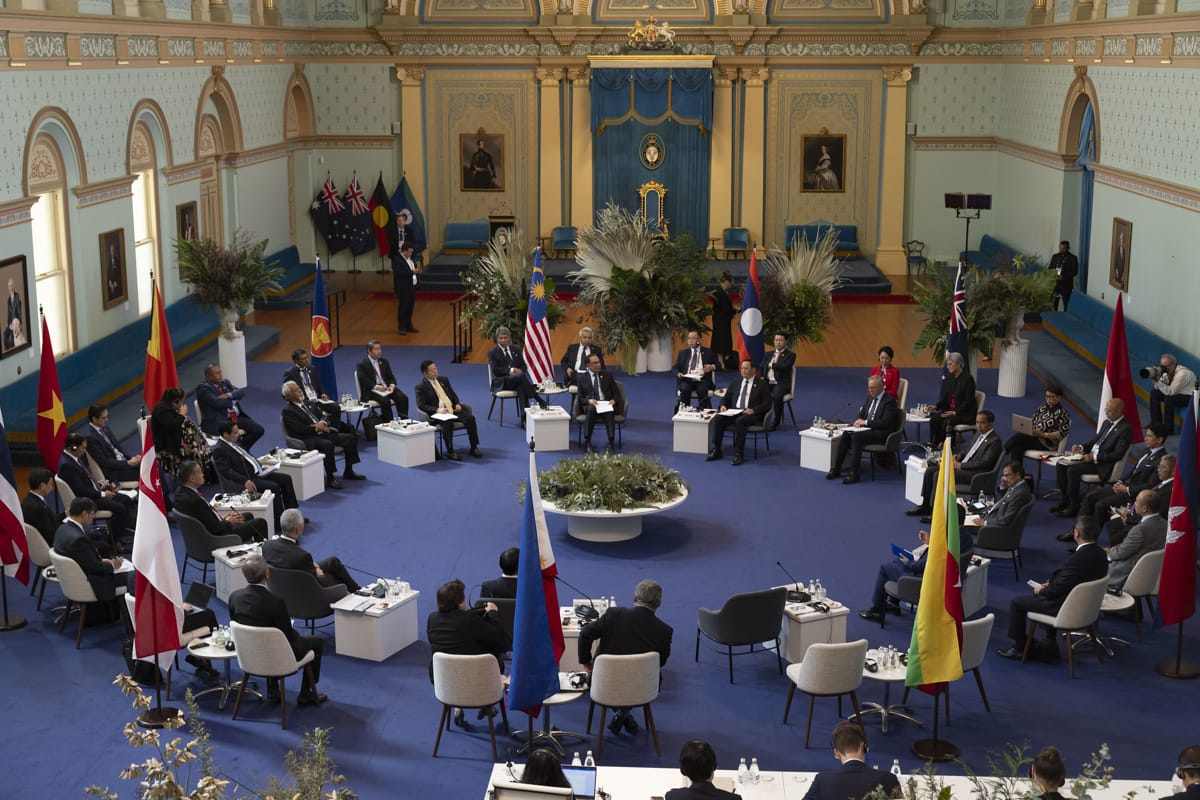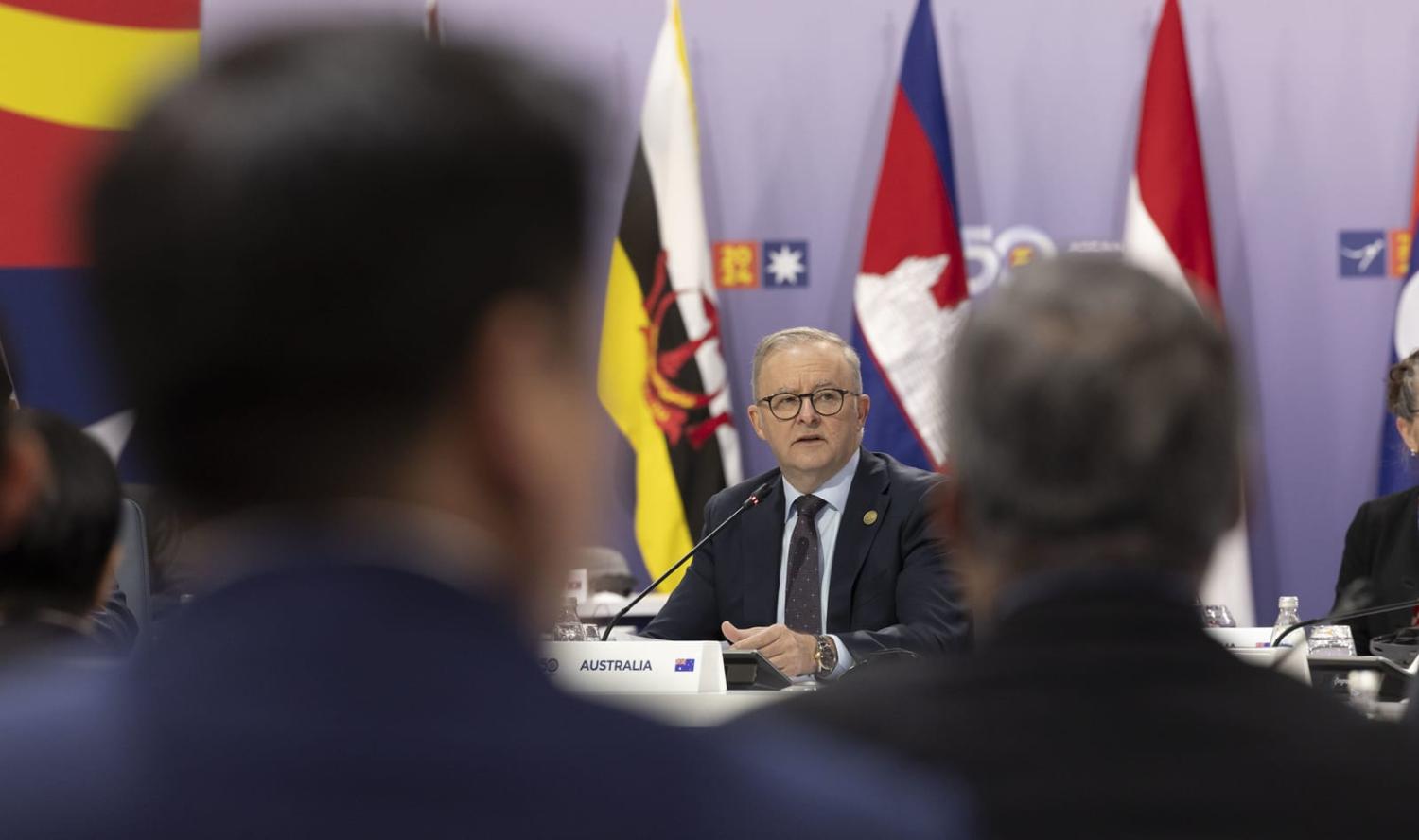Having talked about atmospherics and then process, let’s look at results from the final day of the ASEAN-Australia Special Summit. This is the “outcomes document”, as they call it in the trade. Or, as the gathered leaders would prefer it be known, the “Melbourne Declaration”.
“Four themes are ... reflected throughout the Melbourne Declaration,” declared Prime Minister Anthony Albanese early today, pointing to trade and investment, climate change and the switch to clean energy, challenges on the high seas, and the next generation of leaders.
“This is the breadth of our agenda,” Albanese said.
Broad, yes. Not unmanageable. The summit outcome document might be a 55-point declaration, replete with the usual clichés of “shared interests” and “people-to-people links”. Yet cutting the ambition into these four themes makes for a digestible program of work. It’s a tribute to careful diplomacy that the 11 countries involved in the talks have agreed to an expansive vision, while making sure it has a practical focus.
That won’t stop criticism of particulars after the document was finally issued late in the afternoon.
The section on the Gaza conflict is notably general, reflecting comments made by Malaysia’s Prime Minister Anwar Ibrahim on Monday that the summit would avoid contentious issues between Palestinians and Israelis, instead taking a consensus position to call for a ceasefire and more humanitarian support.
No direct condemnation is offered of China’s behaviour in the South China Sea – despite the talks being punctuated by the latest reports of Chinese vessels harassing Filipino ships. “We encourage all countries to avoid any unilateral actions that endanger peace, security and stability in the region” highlights a concern, but no blame is apportioned.
Also missing is any reference to AUKUS, although Australia will be pleased by the statement of support from Singapore’s soon to depart Prime Minister, Lee Hsien Loong. The “Quad” grouping won a passing mention, but only in the context of the Quad vaccine partnership. It’s still unclear how this arrangement might fit with the oft-invoked “ASEAN centrality” in regional security architecture.
Myanmar remains an untreated open sore. The support expressed in the document for “concrete implementation” of ASEAN’s response to the crisis won’t do anything more to force the junta to allow a return to democracy.
The language on Russia’s invasion of Ukraine appears strong on an issue where ASEAN has struggled for a collective position, although still affirms “our national positions as expressed in other fora”. North Korea is given standard short shrift. Taiwan is notable by the absence of any mention. That can be expected to get attention.

The precise choice of words does matter. A fascinating comparison can be made between what the leaders ultimately agreed and the so-called “zero draft” of the Melbourne Declaration that ABC foreign affairs reporter Stephen Dziedzic managed to obtain way back in December when it was first circulated across the region. Albanese was asked about this following the summit.
“People have to compromise,” he said. “To get a statement from Australia and ASEAN, it isn't the same endpoint that any one country would have if they went away and wrote a statement.” Albanese acknowledged that the Philippines’ President Ferdinand “Bongbong” Marcos wanted strong condemnation on the issue. They say politics is the art of the possible; that much is true for diplomacy, too.
Picking apart the language shouldn’t be allowed to wash away the overall message, however.
In Albanese’s words, this is “opportunity from proximity”. Australia sits on the doorstep of Southeast Asia. No, this doesn’t mean Australia will seek membership of ASEAN, Albanese said. The government’s talking points are to hammer home that the region will amount to the world’s fourth-largest economy by 2040. That it will fund new scholarships and have ten business leaders spruik the opportunities. The welcome promise to improve Australia’s sclerotic visa system for Southeast Asians will go further than any other measure to improve economic ties.
Albanese became most animated – if only for a few seconds – when he spoke to the Australian media following the summit. He warned the country risked shrinking in on itself unless seizing the chance on offer. Albanese might have been tilting at Opposition leader Peter Dutton’s criticism of “Labor’s bigger Australia”. That’s part of the government’s next challenge. To show how these connections and relationships will improve the lives of all Australians.

